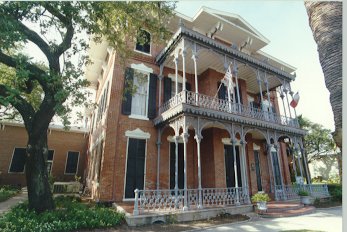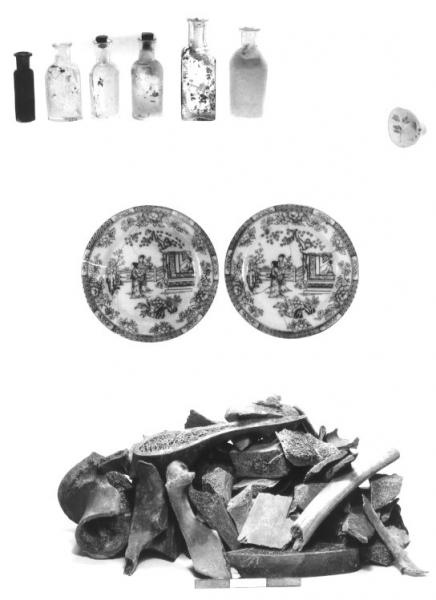Urban Archaeology
Today, we find history in a trash bin. The University of Houston's College of Engineering presents this series about the machines that make our civilization run, and the people whose ingenuity created them.
I had a friend in college -- a baseball fan. Every day he studied ERAs and batting averages in the paper. He knew everything about baseball. One day I asked which games he went to. He glared down his nose and said, "Go to! I don't go anywhere near baseball games." Then he pointed to the paper and said, "Baseball is here. Baseball is statistics."
History's like that for most people -- events and facts. But sooner or later the historian wants to go to the game -- to really see and experience the past. What was it like to live in ancient Rome, in a medieval castle, or, in this case, in a Southern mansion?
Texas is fairly young. Only in Galveston can you find 19th-century antebellum elegance. The old Ashton house is a mansion that survived the terrible 1900 hurricane to tell us its story. Urban archaeologists Texas Anderson and Roger Moore show how to wring that story from it.
An old privy, long since covered over and forgotten, is their main window into the past -- not just an outhouse, but rather a general trash dump. A huge hole in the ground, no longer septic, it contains layers of trash that reveal the quality of life from the late 1850s up through the late Victorian period. The house was built by James Brown, a wealthy businessman. He kept slaves before the Civil War, and the house is very well made because he used the work of slave craftsmen instead of manufactured materiel.
Galveston rode out the Civil War better than most of the South, and so did Brown. After the war he furnished the house with fine European porcelain. His family ate inch-thick T-bone and porterhouse steaks -- they disdained chicken and pork. They used elegant wines and cognacs, but not hard liquor. The ladies imported French perfume and expensive facial astringents. Brown's business involved selling the new 19th-century technologies to the West. His mansion displayed all the latest stuff -- the first flush toilets in Galveston and the first electric lights -- only a few years after Edison had introduced them.
Sifting through century-old detritus, we begin to sense the finery and feel of the place and to know the actual people. We begin to really understand the combined tyranny and vision that Brown represented. To merely say that he exploited slaves or brought technology to the West is like trying to see baseball in newspaper statistics. But the intimacy of an accurate look into the drawing room or the servants quarters is understanding of a whole different order -- even when we see it through a trash heap.
I'm John Lienhard, at the University of Houston, where we're interested in the way inventive minds work.
(Theme music)
I am very grateful to Texas Anderson for her counsel on this episode and for providing the second and third images below.
This episode has been greatly written as Episode 1599.

(Photo by John Lienhard)
Ashton Villa. Note how the ground has been raised almost to the level of the front porch

How they cut up beef at Ashton Villa

Details of various items taken from the old privy